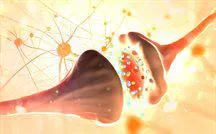Synaptic dysfunction and intrinsic excitability in ASD
A key focus of this project is to investigate differences in the synaptic development of neurons at a functional level. We will address established hypotheses in the field regarding disorders such as autism spectrum disorder (ASD) that have implicated disruption to synaptic structure and function, or disturbed balance between excitation and inhibition, as key players in its pathogenesis. In addition, we will examine emerging ideas that have focused on the possibility of disruption to ion channels positioned near the synapse as new pharmacological targets
This work utilises neurons established from human inducible pluripotent stem cells derived from individuals with ASD (and other neurodevelopmental disorders) and compares them with cells from relevant control individuals.
Stem cell technology has the advantage that cells can be reprogrammed along different neuronal fates so that we can also compare neuronal cells from different lineages. This allows the possibility of studying specific genetic backgrounds in neurons from different brain regions. Key techniques include whole-cell patch clamp electrophysiology and calcium imaging combined with post hoc single cell reconstruction and immunocytochemistry.
This study is linked to the wider EU-AIMS project (European Autism Interventions) - A multicentre study for developing new medications.
Aims
The aim of this project is to combine optical imaging techniques with electrophysiology to investigate novel structural and functional pathways disrupted in neurodevelopmental disorders at the neuronal level.


